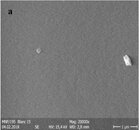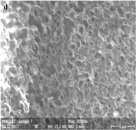- Messages
- 7,659
- Reaction score
- 4,720
- # of dives
- 200 - 499
The last issue that is preventing me from writing this up is the unanswered question of what, exactly, is making the glass so amazingly hydrophilic when using only ammonium hydroxide. Try it, the result is dramatic.
Is it super-cleaning or hydroxylation or nanostructuring of the glass surface? For ammonia, it is beginning to look like it is all three. Grand Slam. Simplest 'all in one place' justification that I can come up with is given here:
The following research article is concerned with producing a hydrophobic glass surface. However, the researchers first make the surface super-hydrophilic using ammonium hydroxide, time, and temperature. Time and temperature are trade-offs. Increase one, decrease the other for a similar result.
Ammonium hydroxide appears to clean, hydroxylate, and nanostructure a typical glass surface:
I'm offering only the very basics here, you can get a bit more insight by paying for access (like I had to) and reading the journal article for full info:
https://doi.org/10.1016/j.apsusc.2019.144843
Quoting:
'Glass surface was nanotextured by etching process, using a facile hydrothermal processing, based on the interaction between ammonium hydroxide (NH4OH) and glass surface.'
 Untreated
Untreated
 Treated
Treated
More coming as to why the structured glass (second pic) is far superior to our off-the-shelf dive masks...
Is it super-cleaning or hydroxylation or nanostructuring of the glass surface? For ammonia, it is beginning to look like it is all three. Grand Slam. Simplest 'all in one place' justification that I can come up with is given here:
The following research article is concerned with producing a hydrophobic glass surface. However, the researchers first make the surface super-hydrophilic using ammonium hydroxide, time, and temperature. Time and temperature are trade-offs. Increase one, decrease the other for a similar result.
Ammonium hydroxide appears to clean, hydroxylate, and nanostructure a typical glass surface:
I'm offering only the very basics here, you can get a bit more insight by paying for access (like I had to) and reading the journal article for full info:
https://doi.org/10.1016/j.apsusc.2019.144843
Quoting:
'Glass surface was nanotextured by etching process, using a facile hydrothermal processing, based on the interaction between ammonium hydroxide (NH4OH) and glass surface.'
 Untreated
Untreated Treated
TreatedMore coming as to why the structured glass (second pic) is far superior to our off-the-shelf dive masks...



